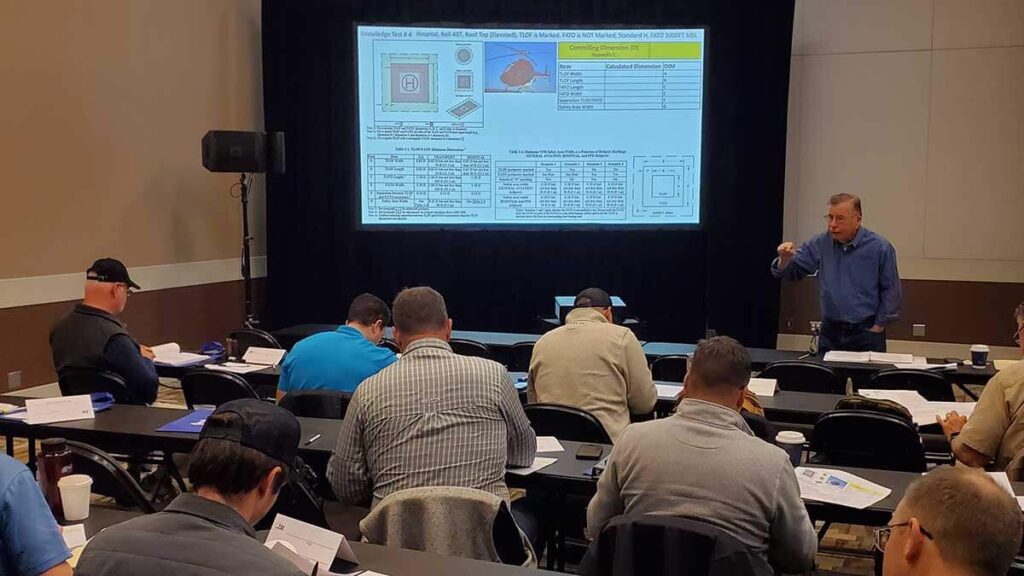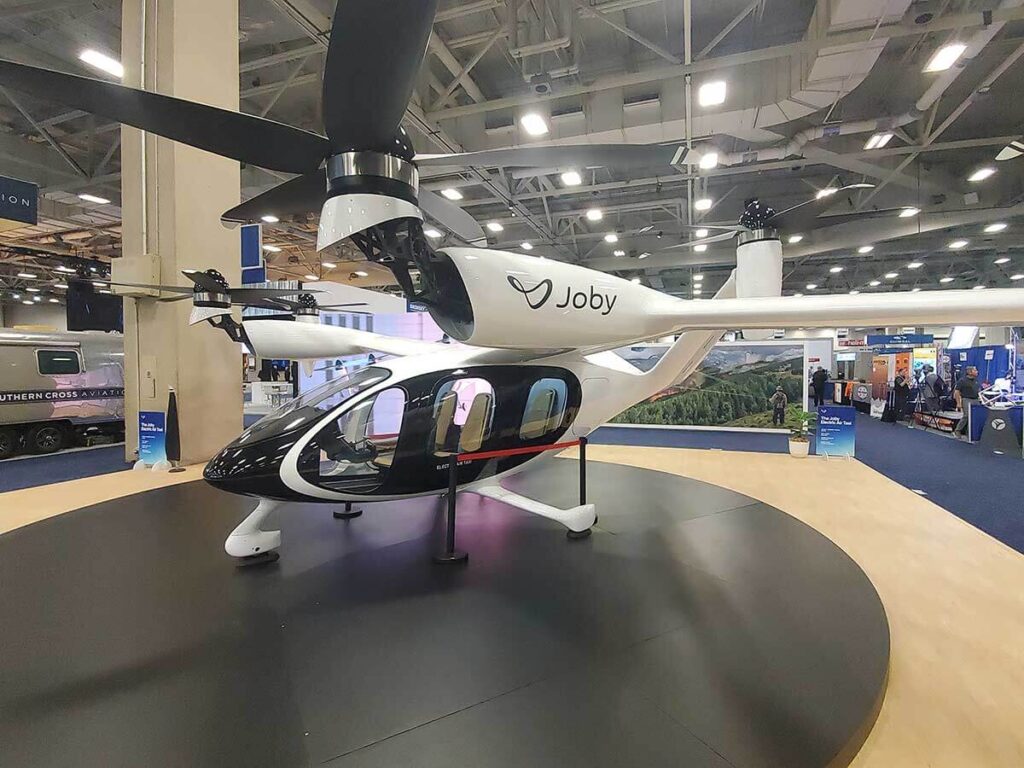In Dallas, Texas during the month of March this year, we witnessed the first ever “Verticon” conference. All told, in reviewing the numbers posted by Vertical Aviation International (VAI), formerly known as Helicopter Association International (HAI), the conference was a resounding success. The final tally posted by VAI was over 686 exhibitors, including 44 aircraft from top-tier aircraft manufacturers, and 14,414 attendees from 88 different countries. While slightly less than the numbers posted in 2024 for the then HeliExpo, the event was nevertheless an excellent showing for the event under its new name and branding. Here’s a run down of my observations from the show.

Educational Offerings
As in past years, the conference provided attendees with a wide variety of educational courses to choose from, including over 100+ education opportunities. From the all-day programs identified as “Elevation Courses” such as the 3-day Transportation Safety Institute (TSI) Heliport Evaluation Course to the shorter 1-hour courses termed “Foundations Challenges,” Verticon offered something for just about everyone. In addition to these educational offerings, VAI also provided an excellent selection of Technical Briefings from helicopter manufacturers, engine manufacturers and other subject matter experts (SMEs) from the industry.
Why It Matters: One of the great equalizers, when it comes to improving safety and efficiency of the aviation industry, is education and training. It is through the offerings of aviation-specific course material at events such as Verticon from some of the best SMEs in the world that we can truly make a lasting difference. I encourage anyone who has not taken advantage of these course offerings to seek them out the next time the opportunity presents itself.
Noteworthy Announcements
While there were several fantastic aircraft on display at this year’s conference, there were a few manufacturers who had some standout reveals.
The Robinson Helicopter Company

The Robinson Helicopter Company unveiled its R88, the company’s first all-new aircraft in nearly 15 years. Designed to be a larger, more capable helicopter, it advances Robinson’s influence into more diverse mission profiles. The highly configurable cabin is suitable for various operations, including aerial firefighting, air medical transport, utility work and passenger transport. Powered by a single 1,000-shaft horsepower Safran Arriel 2W engine, the R88 offers a range exceeding 350 nautical miles and an endurance of over 3.5 hours. The helicopter can accommodate eight main cabin seats and two cockpit seats with a payload capacity of up to 1,800 pounds with full fuel.
Airbus Helicopters
Airbus Helicopters introduced their new H140 helicopter, a light twin-engine helicopter in the 3-ton class, designed to bridge the gap for performance, cost-effectiveness and comfort in the light twin category. According to Airbus, the H140 is set to enter service in 2028, initially targeting the Helicopter Air Ambulance (HAA) sector. This new model bridges the gap between the company’s existing H135 and H145 platforms.
The rear loading capabilities of the H140 are facilitated by large clamshell doors and a high tail boom, allowing for the use of various stretcher systems, and intensive care equipment. Notable design features include a five-bladed rotor system, fenestron tail rotor and T-tail design. Powered by a pair of 700 shaft horsepower Safran Arrius 2E turboshaft engines, Airbus says this helicopter offers the best payload/range in its class.
Sikorsky

Sikorsky unveiled its latest version of the S-92 helicopter, focusing on the development of the Phase IV main gearbox, a transformative innovation that sets a new benchmark for reliability, performance and safety in the commercial helicopter industry. The S-92 Phase IV main gearbox features an auxiliary lubrication system that automatically engages in the event of primary oil pressure loss, eliminating the need for immediate landing and allowing an operator to safely reach their destination. This revolutionary solution has been validated through more than 800 hours of rigorous testing. Sikorsky anticipates Federal Aviation Administration (FAA) certification this year. Additionally, Sikorsky is exploring new markets for the S-92, including its adaptation for firefighting missions.
Why It Matters: While there are numerous advancements in other aspects of vertical flight technology, it is evident, at least to me, that the traditional helicopter market still has a significant role to play in the aviation industry for a long time to come. Based on the offerings at Verticon, it is apparent that traditional helicopter manufacturers are not sitting idly waiting to see what happens, but rather pushing the technology envelope ever forward.
Advanced Air Mobility (AAM)
Within the new sector known as Advanced Air Mobility (AAM), VAI hosted several panel discussions throughout the week and a full day infrastructure forum. Panel discussions included Vehicles, Regulations and Entry into Service, Infrastructure and Airspace Integration, and Coexisting and Complementary: Helicopter and eVTOL Delivery AAM Services. The full day Industry Forum, hosted by VAI’s new Vertical Flight Infrastructure (VFI) Industry Advisory Council (IAC) focused on Fire Safety, Vertiport and Heliport Standards Development and Low Altitude IFR ZK Route Systems.

While there were a number of AAM industry representatives in attendance, Joby Aviation was one of the few AAM manufacturers who secured a booth which featured a mockup of their current eVTOL aircraft.
Why it matters / Rex’s Opinion – It is efforts such as these collaborative industry/government panel discussions and forums on Advanced Air Mobility that will allow for this new technology to flourish in a positive and well-informed way. As first coined by Sir Francis Bacon “scientia est potentia” or “knowledge is power”.
Who Was Not There
It was quite apparent that only a handful of representatives from the FAA were in attendance and no one from the NTSB was able to attend. This absence was largely due to DOGE-directed policy implementations by government agencies such as the FAA and the National Transportation Safety Board (NTSB) instructing its employees to limit or cease participation in advisory committees and industry conferences.
This led to the restructuring or cancelling of several panels and educational sessions. This has raised significant concerns within the aviation community. Many hope that these directives will only be temporary, as they have the potential to derail critically important collaboration between government agencies and industry.
Industry advisory committees, which are generally composed of both government and industry representatives, routinely hold in-depth meetings during conferences such as Verticon.These meetings have historically been instrumental in addressing critical safety issues pertaining to infrastructure, operations and air traffic.
The FAA’s current travel restrictions and reduced participation in industry events present immediate implications to the aviation community and its ability to address pressing issues collaboratively. Conferences and workshops serve as vital venues for stakeholders to discuss advancements, share best practices and coordinate on safety measures. The FAA’s absence from such gatherings may lead to delays in policy development and the implementation of safety recommendations. This will ultimately affect the industry’s capacity to adapt to evolving technology and maintain public confidence in air travel.
In the long term, the government’s withdrawal from these collaborative forums disrupts the essential exchange of ideas and subject matter expertise necessary for the continuous improvement of aviation safety and operations. A continued absence of government participation at events such as Verticon has the real potential to hinder the development of comprehensive solutions to industry challenges. This will negatively impact the overall safety and efficiency of air travel.
Why It Matters: “Long ago in a galaxy far, far away” industry worked hand-in-hand with the FAA in the process of regulations and standards development from beginning to end. However, as of the last 30+ years, many government agencies’ modus operandi has been to develop regulations and standards over months or years in a vacuum with little or no industry collaboration. This process is then followed by a short 30-60 day window where industry is allowed to provide feedback which is then followed by a period of time where the government decides on what responses they want to adjudicate. But conferences such as Verticon, have nevertheless allowed industry’s SMEs to help government officials better understand the current and future trends and limitations of the aviation industry. Without this collaborative exercise taking place, the work product agencies produce will be (more times than not) substandard, fraught with issues and cost more than it should. Hopefully, what we experienced at Verticon regarding the government’s lack of involvement and collaboration will be recorded as a temporary speedbump on the road to aviation safety and excellence.
Next Year
Verticon 2026 is scheduled to be held March 9-12 in Atlanta, Georgia. It is everyone’s hope in the vertical flight industry that we will see a resurgence of participation from our friends in the government and that more AAM original equipment manufacturers (OEMs) will show off their sleek new aircraft. We all look forward to a closer working relationship between industry stalwarts, new entrants and, of course, our friends in the FAA and NTSB. Fingers Crossed!
By: Rex J. Alexander
